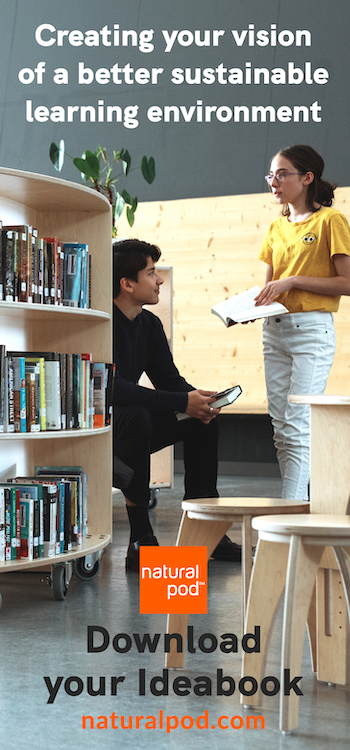By. Charles Orgbon III, Founder of Greening Forward
Every day, young people all over the United States spend somewhere between 6 and 7 hours at school, or about 29% of their 24-hour days. This means that our young people are spending 140 hours a month or 1,680 hours a year at school, which accounts for more waking time than they spend at home or participating in community activities during the week. This is a critical reason why growing and supporting the green schools movement is key to helping young people develop healthy environmental habits and, in turn, a brighter (and greener) future for us all.
The green schools movement is rooted in the idea that all students in all school districts should have access to environmentally equitable school buildings and the opportunity to learn environmental literacy. From indoor air quality and chemical exposure to the physical construction of school buildings, students have the ability to make tangible change on green issues that matter. Actively participating in the green schools movement is the perfect opportunity for young people to learn about, and take action on, these critical issues, grow their personal and professional skill set from an early age, and ultimately pave the way for a future in the green economy.
For today’s young people, living a sustainable lifestyle means so much more than simply knowing how to recycle or compost. Instead, our planet is relying on young people to build sustainable habits that will transform the way they live their daily lives from now and into the future. From being conscious about water consumption to knowing how the food we grow and eat affects climate change, students are the key to solving the global environmental issues we all face. The green schools movement is where this change begins.
This March, in partnership with Greening Forward, the Green Schools National Network and the Center for Green Schools at the U.S. Green Building Council will be hosting the Green Schools Conference and Expo’s (GSCE) Student Summit. This unique event gives middle and high school students working towards greener schools a venue to convene, learn, and share their environmental work. The 2-day summit promises to provide a one-of-a-kind space for young people to gather and equip themselves with 21st century skills, knowledge, and resources that will enable them to make order ambien online uk creative and meaningful change in their local communities. Whether students are interested in starting a recycling program or equipping their school with solar power, all participants will have the chance to share their passions and projects with other students, as well as amplify their work through their participation in this powerful event.
Students who attend the summit will have the chance to meet and network with other passionate young people from all over the country, hone core leadership skills from industry-leading experts that will help them take their sustainability projects to the next level, and learn more about how they can take their passion for sustainability and transform it into a career. From leadership to volunteer management to public speaking and beyond, there’s something for everyone to learn at the GSCE Student Summit. Most importantly, the summit participants will be able to take their new found knowledge, skills, and ideas home and put their dreams to work, bettering their local communities and creating a greener future for us all.
The GSCE Student Summit will take place March 31st through April 1st, 2016 in Pittsburgh, PA. Students can register online now through March 31st for a discounted student rate of $200.
About Charles Orgbon III

Photo | Tangee Renee Photography
Charles Orgbon III has been involved in the environmental movement from an early age. After noticing his school’s littering problem in the 5th grade, he started leading school-based community beautification projects. Charles quickly realized that the environmental movement was not adequately supporting young environmental changemakers; therefore, he created Greening Forward. Today, the youth-driven, youth-imagined organization has grown into the largest movement of its kind. In all, Greening Forward has distributed over tens of thousands of dollars in funding to youth environmental projects that plant trees, build compost bins, install rain barrels, monitor streams, and recycle tons of waste. Charles has planned numerous International Young Environmentalist Youth Summits and advocates for a number of other environmental issues. The Children’s Museum of Indianapolis has dedicated a part of its Power of Children exhibit to commemorate Charles’s efforts to inspire more young people to make a positive difference in the world. Charles’s latest book feature can be found in Be a Changemaker: How To Start Something that Matters, by author Laurie Thompson.



